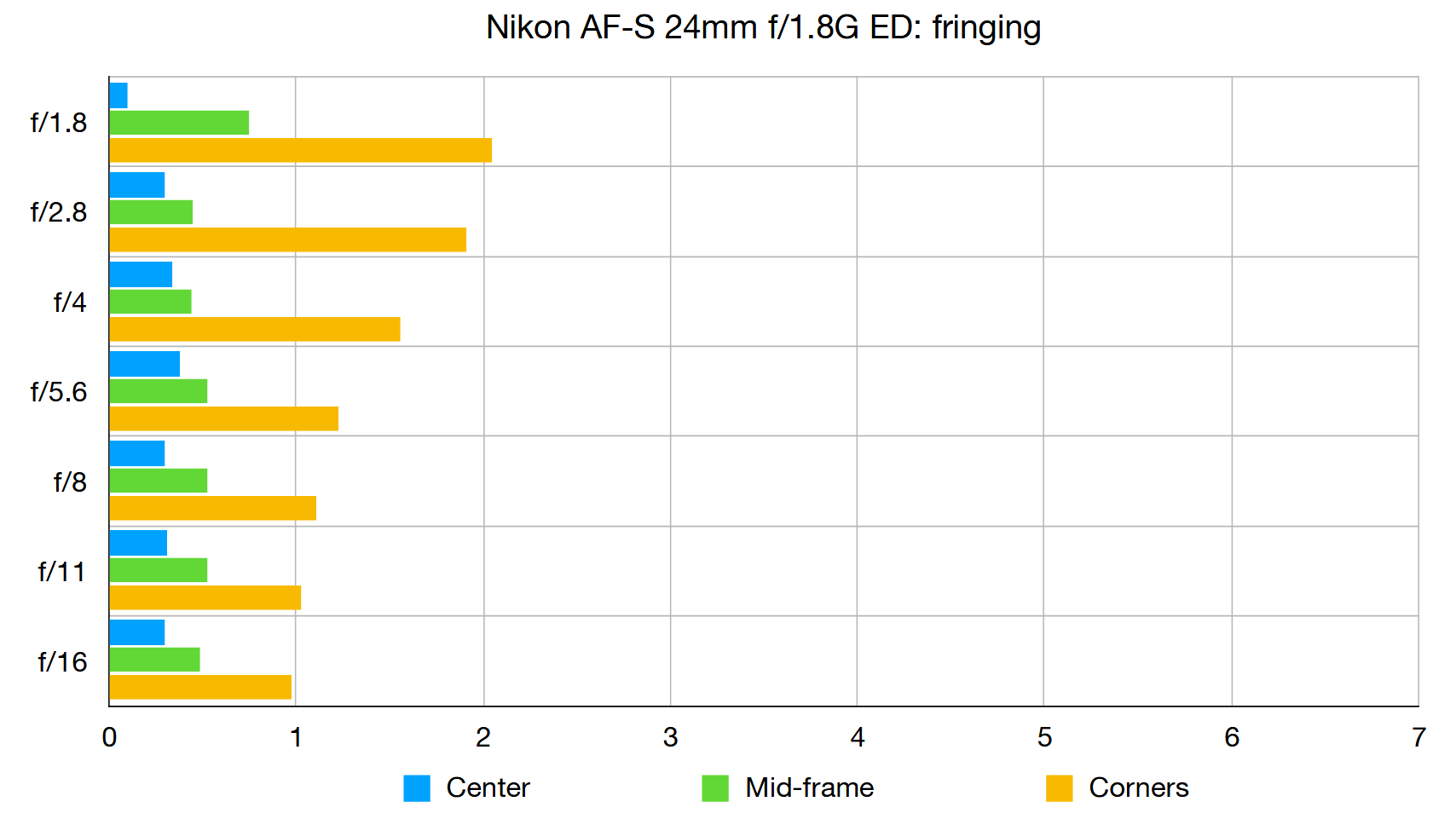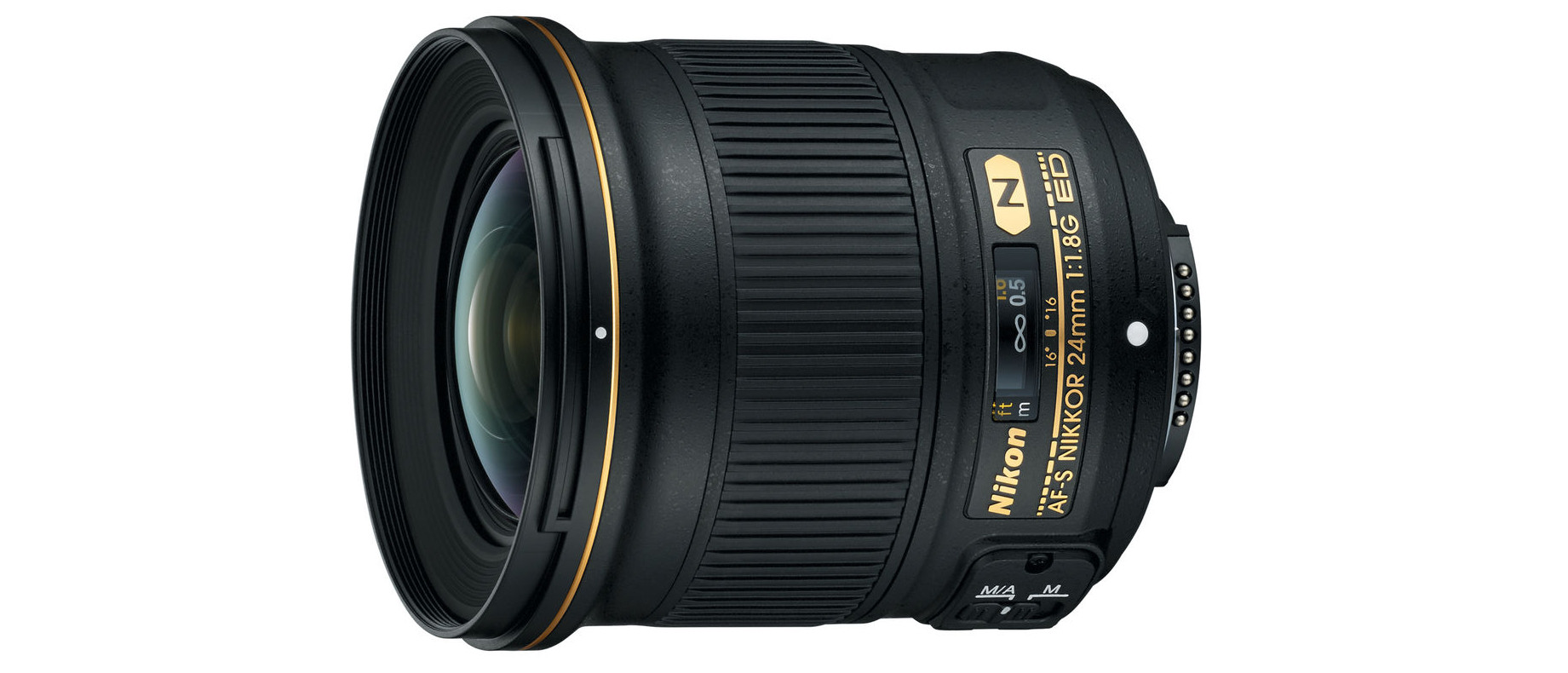Digital Camera World Verdict
Sometimes we all feel the need for speed, and an f/2.8 zoom just won’t cut it. This prime lens gives the same generous viewing angle as a Nikon 24-70mm f/2.8 or 24-120mm f/4 at their shortest zoom setting, while being more than one or two f/stops faster respectively. It’s therefore great for freezing action under low lighting conditions, enabling a faster shutter speed without needing to bump up your camera’s ISO setting.
Pros
- +
Fast f/1.8 aperture
- +
Impressive image quality
- +
Solid but lightweight build
Cons
- -
Less speedy than an f/1.4 lens
- -
Noticeable vignetting at f/1.8
- -
Quite expensive to buy
Why you can trust Digital Camera World
The Nikon AF-S 24mm f/1.8G ED gives no boost in field of view, compared with most standard zoom lenses but it gives you a faster aperture. Not just for maintaining fast shutter speeds under low lighting, this also helps to isolate subjects in a scene with a tighter depth of field. Naturally that’s quite a struggle with such a short focal length, but it can work well in close-ups and the Nikon focuses down to just 0.23m or 9 inches, as measured from the focal plane (essentially the camera’s image sensor).
Specifications
Mount: Nikon F (FX)
Full-frame: Yes
Autofocus: Yes
Stabilization: No
Lens construction: 12 elements in 9 groups
Angle of view: 84 degrees
Diaphragm blades: 7
Minimum aperture: f/16
Minimum focusing distance: 0.23m
Maximum magnification ratio: 0.2x
Filter size: 72mm
Dimensions: 78x83mm
Weight: 335g
Key features
Like its sibling Nikon AF-S 20mm f/1.8G ED, this lens features two ED (Extra-low Dispersion) elements and two aspherical elements, although there’s one less element in the complete optical line-up. There’s also the same provision of both high-tech Nano Crystal Coat and more conventional Super Integrated Coating.
The autofocus system is also same, based on Nikon’s Silent Wave Motor, or ring-type ultrasonic system. It comes complete with the same M/A autofocus mode, which gives priority to manual override during autofocus, and a focus distance scale under a viewing window.
Build quality is good and features a rubber weather-seal ring on the metal mounting plate. Considering the lens’s wide aperture rating, it’s conveniently small and lightweight, at 78x83mm and 335g. As such, it’s a good fit not only for FX (full-frame) bodies but also works well as a classic ‘street lens’ for walkabout shooting with a DX (APS-C) format camera, on which it gives an effective focal length of 36mm.
Performance
Autofocus is fast and whisper-quiet, helped by the fact that only the rear group of smaller elements are moved during focusing. Sharpness is thoroughly excellent at all apertures apart from the two extremes of f/1.8 and f/16, where it’s still very good. Indeed, edge/corner-sharpness holds up better when shooting at very wide apertures, compared with the AF-S 20mm lens. Color fringing and distortion are fairly minimal and there’s good resistance to ghosting and flare, although vignetting is quite heavy at f/1.8.
Lab results
We run a range of lab tests under controlled conditions, using the Imatest Master testing suite. Photos of test charts are taken across the range of apertures and zooms (where available), then analyzed for sharpness, distortion and chromatic aberrations.
We use Imatest SFR (spatial frequency response) charts and analysis software to plot lens resolution at the center of the image frame, corners and mid-point distances, across the range of aperture settings and, with zoom lenses, at four different focal lengths. The tests also measure distortion and color fringing (chromatic aberration).
Sharpness:

Sharpness is absolutely excellent at most apertures and still very good wide-open at f/1.8.
Fringing:

There’s a little lateral chromatic aberration towards the corners of the image frame but the automatic in-camera correction of most Nikon bodies takes care of this.
Distortion: -1.66
For a wide-angle lens, barrel distortion is quite minimal and easy to correct, either in-camera or at the editing stage.
Verdict
Sometimes we all feel the need for speed, and an f/2.8 zoom just won’t cut it. This prime lens gives the same generous viewing angle as a Nikon 24-70mm f/2.8 or 24-120mm f/4 at their shortest zoom setting, while being more than one or two f/stops faster respectively. It’s therefore great for freezing action under low lighting conditions, enabling a faster shutter speed without needing to bump up your camera’s ISO setting.
Read more:
• Best camera lenses to get
• Best Canon lenses
• Best Nikon lenses
• Best Sony lenses
Matthew Richards is a photographer and journalist who has spent years using and reviewing all manner of photo gear. He is Digital Camera World's principal lens reviewer – and has tested more primes and zooms than most people have had hot dinners!
His expertise with equipment doesn’t end there, though. He is also an encyclopedia when it comes to all manner of cameras, camera holsters and bags, flashguns, tripods and heads, printers, papers and inks, and just about anything imaging-related.
In an earlier life he was a broadcast engineer at the BBC, as well as a former editor of PC Guide.



